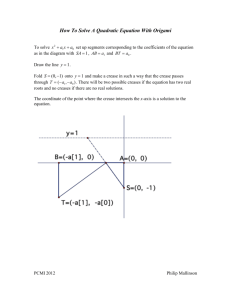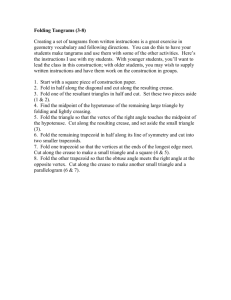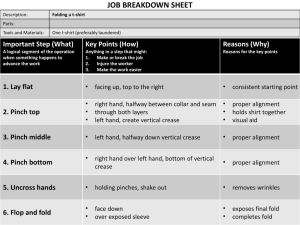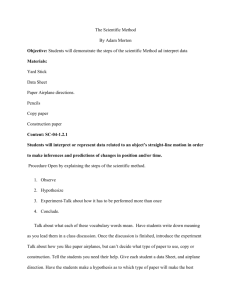Dodecahedron
advertisement
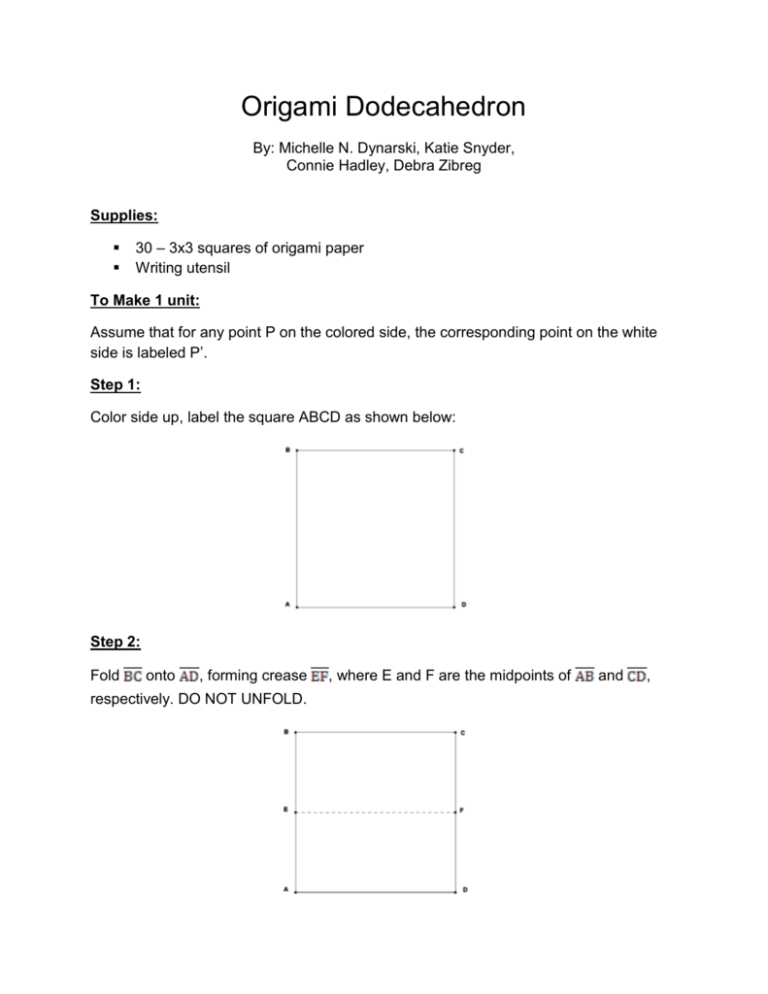
Origami Dodecahedron By: Michelle N. Dynarski, Katie Snyder, Connie Hadley, Debra Zibreg Supplies: 30 – 3x3 squares of origami paper Writing utensil To Make 1 unit: Assume that for any point P on the colored side, the corresponding point on the white side is labeled P’. Step 1: Color side up, label the square ABCD as shown below: Step 2: Fold onto , forming crease respectively. DO NOT UNFOLD. , where E and F are the midpoints of and , Step 3: Label new rectangle B’E’F’C’ as shown below (Note rectangle GEFH is white): Step 4: Fold onto , forming crease respectively. DO NOT UNFOLD. , where K and L are the midpoints of and Step 5: Flip over, you should see rectangle D’F’E’A’ as shown below: Step 6: Fold onto , forming crease , where M and N are the midpoints of respectively. This forms rectangle NDAM as shown below: and Step 7: Flip rectangle NDAM on a horizontal axis towards you. This will result in already labeled rectangle CLKB. Step 8: Fold points C and F’ (the whole left bottom corner) onto , forming crease Similarly, fold points K and M (the whole top right corner) onto shown below: . , forming crease as Step 9: Fold crease to complete the first unit! Next make 29 more, then follow directions below, for assembling the dodecahedron. When we assemble the dodecahedron, the triangles CPL and KQB will be tabs, and the edge PQ will become one of the 30 edges of the dodecahedron. Dodecahedron Directions for Assembly: Three edges (fold through middle of unit) should meet at each vertex(Ex. is the edge in the directions above). Each outer triangle (Ex. Triangle CLP and triangle KBQ) should be tucked inside an edge so that the hypotenuse of the triangle lines up with the middle crease (edge). o For example, if the fold through the middle of the unit is and the hypotenuse of the triangle is segment , then S=P and segment lies on . Assembly: Take 3 units, and hook together as explained above. Then, on each extending unit hook on two more units. Keep hooking on units until you have four edges around one side. The fifth edge will connect the two extended edges to form a pentagon. Keep doing this until you can connect the final pieces to form your very own dodecahedron! To see the directions in action go to: http://www.youtube.com/watch?v=JexZ3NIaoEw
